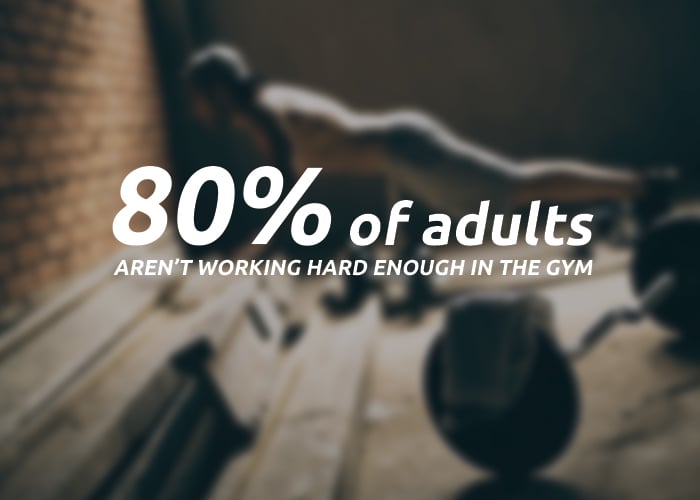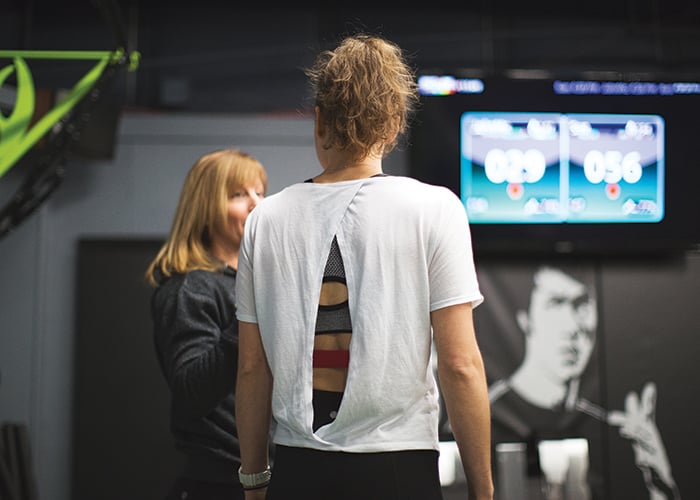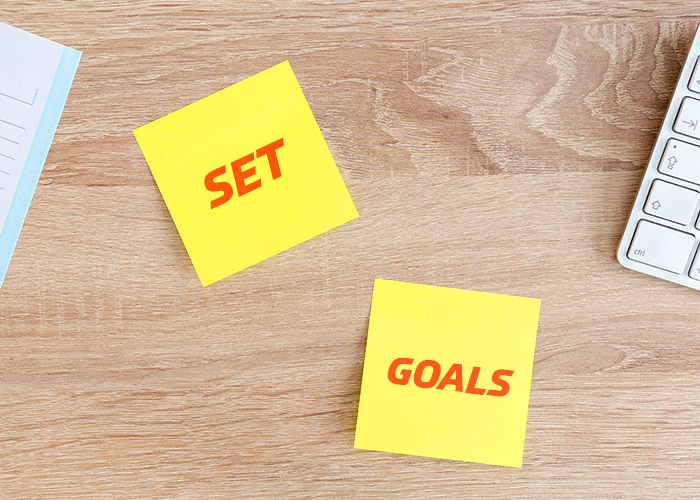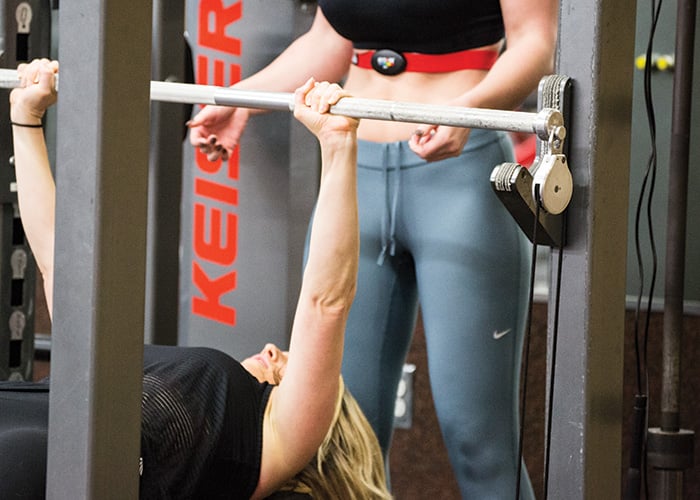How to Sustain Motivation Through 2017
Happy 2017!!! Right now, your veins are probably pumping with motivation to exercise and achieve your goals - right on! Get to it and start strong! Remember that you are in this for the long haul - your sustained effort over time is more important than a short-term burst of effort. Pace yourself and enjoy the ride with some fitness motivation tools.
As you probably know, health club memberships and physical activity levels tend to increase and peak during the first quarter of the year (January – March), and then drop off throughout the rest of the year. This blog post is dedicated to helping you sway the statistics by staying committed to your health and fitness routine throughout 2017!

First, a dose of reality with some striking statistics about physical activity levels in the U.S.:
- Last year, over 151 million people held health club memberships across the globe. The U.S. led all markets with 55 million members and over 36,000 facilities.
- Despite leading all health club membership markets at 55 million members, only 17% of the U.S. population held health club memberships last year (total U.S. population is roughly 325 million).
- In the U.S., more than 80% of adults do not meet the guidelines for both aerobic and muscle - strengthening activities!
- Only one in three adults meet the aerobic physical activity (PA) guidelines each week (150 minutes of moderate intensity PA, or 75 minutes of vigorous intensity PA).

In this blog post, we are going to provide you with some fitness motivation tools and strategies to sustain your motivation in 2017 and move the statistics in a positive direction!
Let’s begin with habit formation. There are different schools of thought on how long it takes to form a habit. Some sources report that a habit can be formed in as little as 21 days, whereas other sources claim at least 66 days are needed to form a habit. Yet other sources state that you cannot put a timeline on habit formation as there are too many individual factors that come into play.
Although there is disagreement on how long habit formation takes, sources seem to agree that a successful strategy to promote habit formation is to eliminate barriers as much as possible. This requires some proactive energy on your part – some planning ahead.

You have probably heard of the very straightforward solutions like placing your gym clothes and shoes by the door so that they are ready for you or packing a snack so that you don’t go to the gym on an empty stomach. Check out some additional suggestions in our previous blog post about eliminating barriers and forming habits.
Now that you have set yourself up for habit formation, let’s outline some fitness motivation tools you can put into play throughout the year.
A very popular theory of motivation from the field of psychology is Ryan and Deci’s Self-Determination Theory (SDT). The theory posits that there is a range of motivation and behavior that we experience as human beings, and that we perform most optimally and experience higher levels of well-being when our motivation is intrinsic (internal) and our behavior is self-determined. Related to exercise, we are more likely to persist with an exercise behavior/habit if we are internally (rather than externally) motivated and we perceive our behavior to be of our own choice. So, it is best to engage in exercise activities that we enjoy, or that allow us to experience a sense of satisfaction and accomplishment. Which exercise activities resonate the most with you?
According to SDT, motivation ranges from amotivation (experiencing no motivation at all) to extrinsic motivation (being motivated by external rewards or punishments) to intrinsic motivation (being motivated from within out of interest, enjoyment, and inherent satisfaction). In parallel, behavior will range from nonself-determined (experiencing a lack of control) to self-determined (experiencing control over our behavioral choices).
Ideally, we want to experience intrinsic motivation and self-determined behavior as much as possible. Again, related to exercise, this means we want our motivation to come from within out of interest and enjoyment, and we want to perceive that we are choosing the behavior of exercise for ourselves; even further, that we are choosing the identity of an exerciser. Do you see yourself as an exerciser? Try an experiment and talk about yourself in that way when you next chat with a friend.
Many exercisers begin a fitness routine via extrinsic (external) motivation. For example, to lose weight, to look more toned, to improve health indices (i.e. blood pressure), or because their doctor/partner/friend urged them to. This is not a bad thing! According to SDT, we have the ability as human beings to evolve in our motivation from external to internal by internalizing a behavior and assimilating it into our perception of ourselves. We can align our exercise behavior with our other values and needs to create a more internal motivation.
Most of us will experience both extrinsic and intrinsic motivation related to exercise behavior, and that is a very normal phenomenon. We can start to move the dial in the direction of intrinsic motivation by identifying how the behavior of exercise is interesting, enjoyable, energizing, empowering, and satisfying. We can also measure the extrinsic motivators like fitness improvements, weight loss, and health improvements without making them top priority.
So, why is it so important to exercise from a place of intrinsic motivation? Because scientific research using SDT has proven time and again that we are more likely to stick with an exercise routine, put out more effort, see greater results, and experience higher levels of well-being if we are intrinsically rather than extrinsically motivated!
But wait, there’s more! Research using SDT has identified social contexts that promote and facilitate intrinsic motivation by meeting three basic psychological needs that we all have as human beings: competence, relatedness, and autonomy. Competence is our sense of being able to do something successfully or with mastery. Relatedness is our sense of being connected to others who are like us and share our values. Autonomy is our sense of ownership and control over our behavior. You can set yourself up for motivational success by creating a social environment which meets these three needs for you.
Shape your exercise environment to meet your psychological needs and experience more intrinsic motivation over time. As a part of the MYZONE® community, you are already well on your way.
Here are a few ways that the MYZONE® community and your MYZONE® belt can meet your psychological needs of competence, relatedness, and autonomy:
Competence:
While you are working out, notice your ability to choose and control your exercise intensity based on your fitness goals. As you complete your workout, name your move on your activity calendar and monitor your progress over time – notice how you begin to master specific workouts.
Further, track your progress in meeting your fitness goals, and be sure to celebrate each achievement!
Relatedness:
In addition to forming relationships with those who you are working out with in your gym or wherever you get your workout on, connect with folks via the Social Connections feature of the MYZONE® App! Find folks that enjoy the same type of workouts that you do and swap training secrets with them. Invite them to complete MYZONE® Challenges with you!
Autonomy:
One of the greatest features of MYZONE® is that your intensity is relative to YOU! Your effort is rewarded based on your relative effort and the MEPs goals you set for yourself. You own your workouts and you own your intensity!
Remember that we are all in this for the long haul and we are committed to motivational strategies that are going to support our sustained effort over time! Let’s keep the fitness motivation tools and effort going through 2017! Post to Facebook, Instagram, and Twitter and use the hashtags: #effortrewarded and #myzonemoves.
For more tips on how to use the MYZONE® heart rate monitor, follow us during Fitness Fridays on Facebook Live (subscribe on MYZONE’s Facebook Page) – 8 am PT, 11 am ET, and check out our MYZONE® Moves Podcast on iTunes or Google Play.
Keep moving forward!
References:
Ryan, R. & Deci, E. (2000). Self-determination theory and the facilitation of intrinsic motivation, social development, and well-being. American Psychologist, 55 (1), 68-78. doi:10.1037//0003-066X.55.1.68 https://www.census.gov/popclock/
http://www.ihrsa.org/news/2016/5/25/global-fitness-industry-records-another-year-of-growth.html
https://www.fitness.gov/resource-center/facts-and-statistics/
http://www.ideafit.com/fitness-library/what-motivates-people-to-exercise
Share this
You May Also Like
These Related Stories

3 Ways to Increase Your Exercise Motivation

Group Heart Rate Tracking: Best Practices



